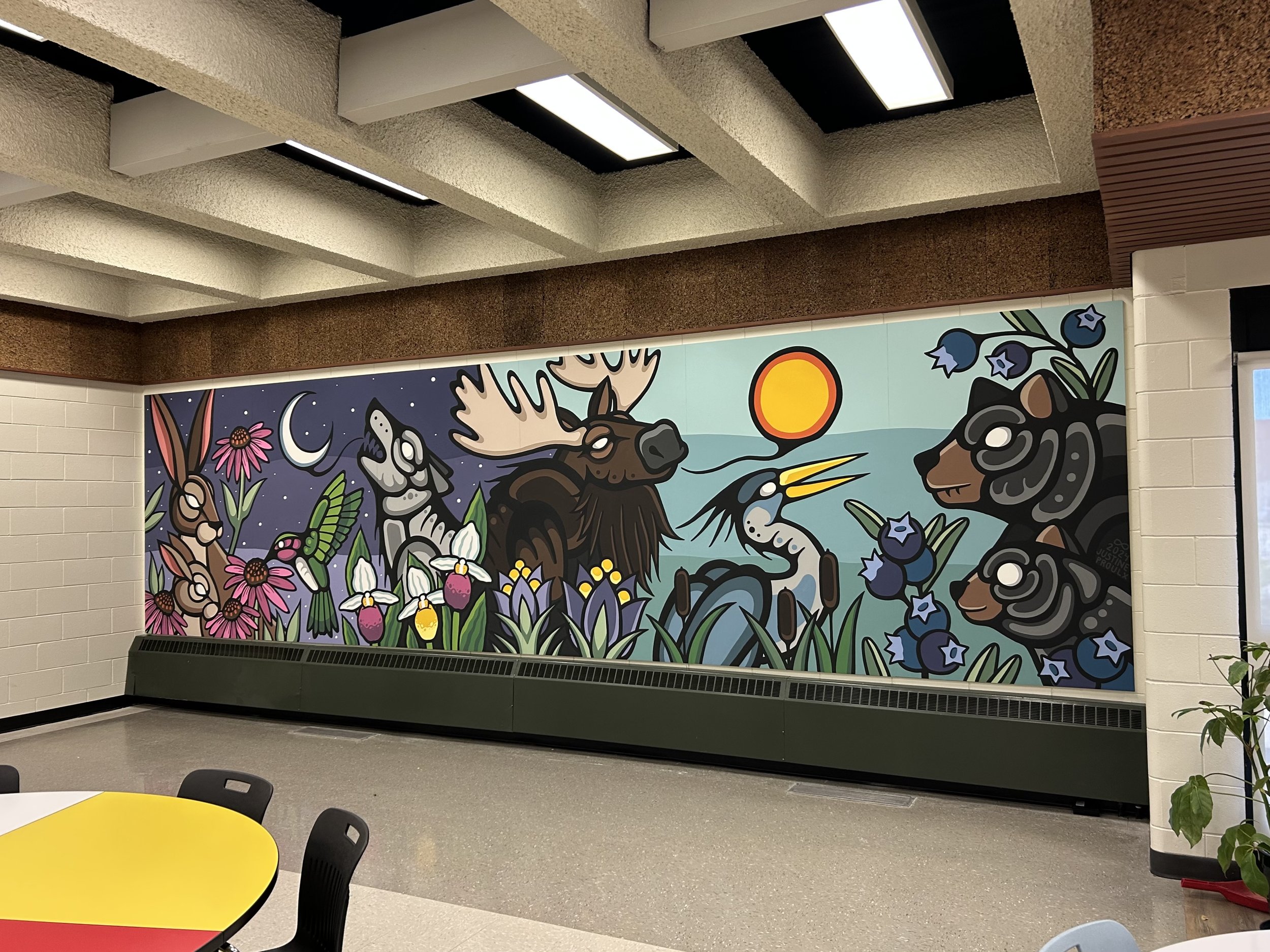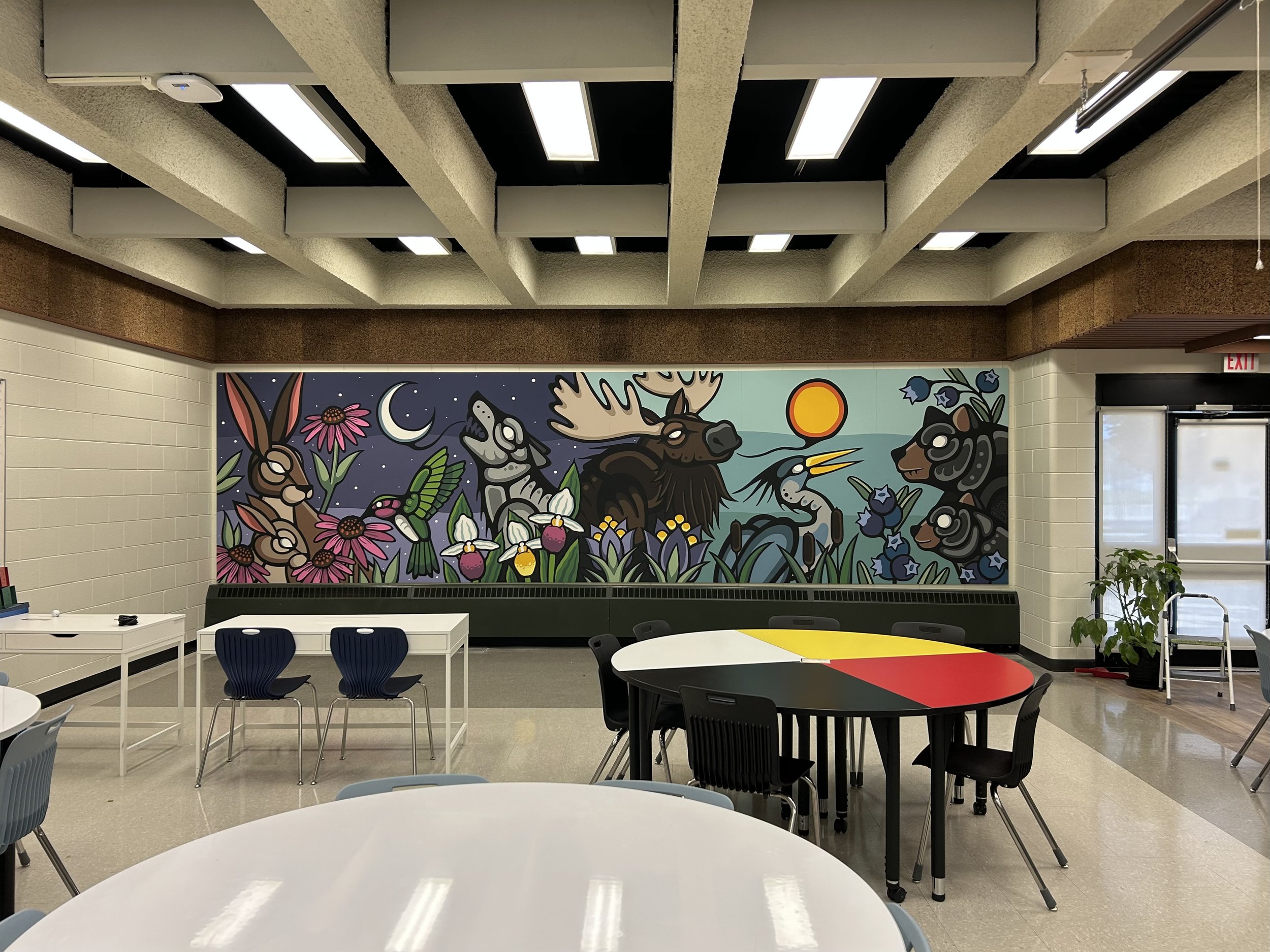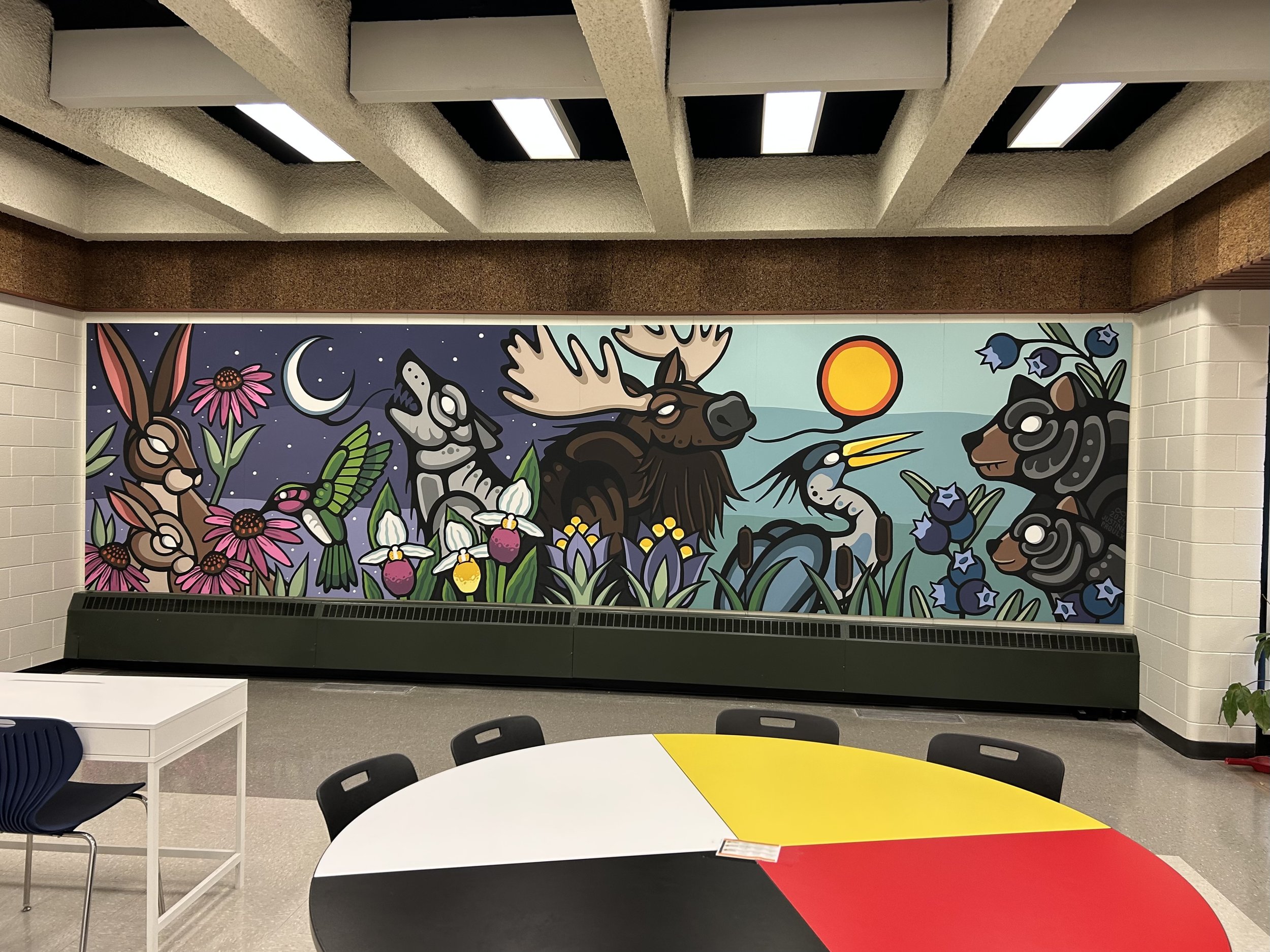MILES MACDONELL COLLEGIATE
This mural is a collection of animals and plants native in Manitoba, each with Indigenous teachings that connect us to each other and our land. Divided into two halves of night and day, the mural portrays the balance between darkness and light, mirroring the harmony found in nature.
First on the night side, we have the Rabbit or Hare, and the Echinacea or Cone Flower. Rabbits are an essential source of food and clothing for Indigenous peoples, reminding us of the importance of sustainability. Every part of the animal, including fur and bones, was used. Nothing was wasted. The Hare also holds spiritual significance through stories of Nanabush, a trickster spirit who often takes the form of a rabbit, teaching lessons through humour and mischief. Echinacea, a plant found growing across Manitoba, has long been used for its medicinal properties. It heals wounds, soothes sore throats, and boosts the immune system.
Next, we meet the Ruby-Throated Hummingbird. Though small, this bird plays a vital role in pollinating plants and maintaining the ecosystem. In Indigenous teachings, the hummingbird is a messenger from the spirit realm, reminding us that even the smallest among us can make a profound impact. Following the hummingbird, we encounter the Wolf, symbolizing humility in the Seven Grandfather Teachings. Wolves live for their pack, teaching us the importance of family, community, and living in harmony and knowing our place with those around us. The Lady Slipper, or Moccasin Flower, tells a beautiful story in Indigenous culture, embodying the values of protection and care, as it is one of Manitoba’s most cherished and protected wildflowers.
On the day side of the mural, we start with the Moose and Prairie Crocus. The moose, with its strength and bravery, represents the warrior spirit and the ability to sustain entire communities. Moose are linked to the Moose Hide Campaign, a movement that encourages men and boys to stand against violence toward women and children. The Prairie Crocus, Manitoba’s official flower, symbolizes new beginnings, spring, and growth, marking the renewal of life after the long winter.
Next we have the Heron, symbolizing strength, patience, and balance. The heron teaches us through its hunting methods to wait for the right moment, and that great strength often lies in quiet perseverance. Cattails are another vital element, representing adaptability and resourcefulness. Every part of the cattail can be used, the shoots, flowers, and roots for food. The fluff used for fire starting and insulation. Stalks and leaves were traditionally used to create baskets, rope, and shelters.
Finally, we have the Bear and Blueberries. The bear represents courage in the Seven Grandfather Teachings, particularly the fierce love and protection of a mother bear toward her cubs. Bears teach us to defend what is right and to live a balanced life of play, rest, and survival. They are also powerful symbols in dreams and visions, guiding individuals on their paths. Blueberries, often associated with bears, are a staple food and carry deep significance in Indigenous communities. Blueberry harvests are communal activities, reflecting the importance of gathering and community spirit.
It is my intent that viewers find joy in the beauty of nature and recognize that every plant and creature on our Earth has a lesson to offer. This mural serves as a reminder that the world around us is full of teachings, and that by using nature as our guide, we can learn to live with balance, respect, and harmony.







